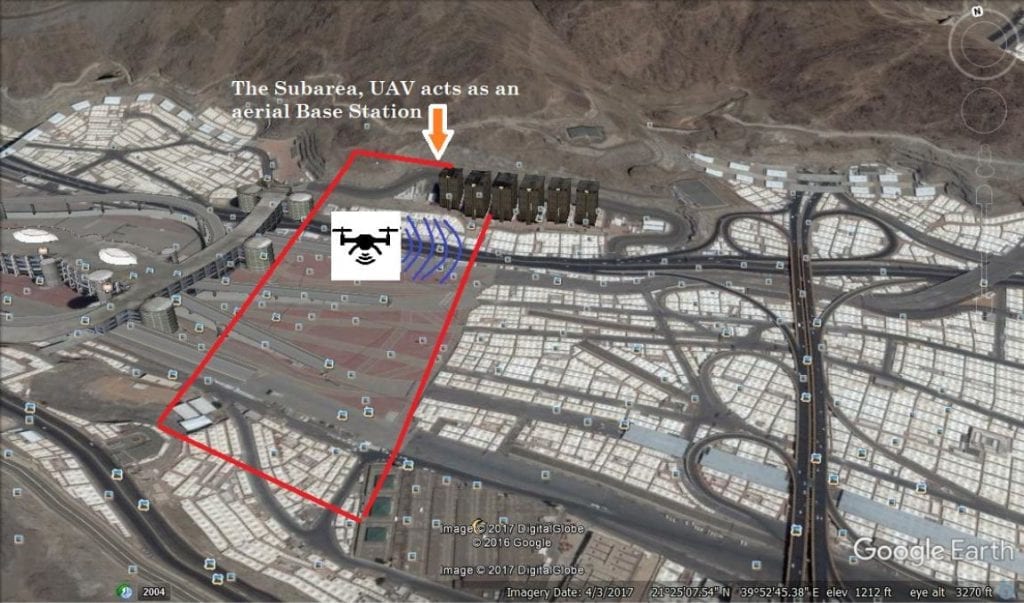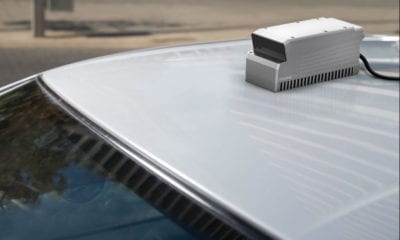
IoT
Deployment of Multi-UAVs in Crowded Events
We all know that nowadays, unmanned aerial vehicles (UAVs) have different uses and different features. They are increasingly diverse and ubiquitous in terms of their roles in today’s society – and have been deployed in many civilian as well as military applications.
Both used as an aerial base station and as a supplement to the existing ground base station when the network is overloaded (especially during crowded special events), the movement of drones can be quite limited in cases with massive crowd – affecting the terrestrial base station with overloading on an inability to provide simultaneous coverage during the event.
The Challenges of Deploying UAVs as Aerial Base Stations
According to three authors at the Department of Electronics and Communications Engineering at the Universiti Tenaga Nasional in Malaysia, the use of multi UAVs in crowded events is prone to some challenges.
As they note in their paper:
“Some of the key technical challenges in the deployment of UAVs as aerial base stations are the efficient 3D deployment of UAVs, power consumptions, wireless coverage optimization and interference management.”
However, the authors also note that there has been an increase of research interest in the efficient 3D deployment of UAV strategies, mostly because such deployment has an impact on power consumptions – which motivates research interest in the efficient deployment of UAV strategies that aim for minimum transmit power.
The Particle Swarm Optimization Algorithm: An Efficient 3D Deployment
In one part of the paper, the authors also propose an efficient 3D deployment of UAVs using the Particle Swarm Optimization algorithm (PSO) which focuses on finding an efficient 3D UAV location that will minimize the total transmit power that is required to cover all indoor receivers where they were distributed inside the building.
Their conclusion in this manner was as following. When considering providing wireless coverage over larger areas, the UAV deployment strategy that maximizes the coverage area is the Circle Packing Theory (CPT), a model that finds an efficient placement of multiple UAVs in which they act as aerial base stations that maximize the coverage area.
Providing Wireless Coverage Using Multiple UAVs Packed with Directional Antennas
Another approach that the authors use is the efficient deployment of multiple UAVs that are equipped with directional antennas. In this manner, the UAV deployment strategy should provide wireless coverage distributed over a large area of square, rectangle and circular 2D regions.
“Each UAV employs a directional antenna, which forms a subarea having a circular coverage pattern, referred to as the circle cell […] In order to avoid the interference between contiguous cells, the non-overlapped constraint is considered. Then, for each circle cell, an efficient 3D UAV placement that minimizes the total UAV transmit power required to cover all receivers within the cell is found. Furthermore, in this work, it is assumed that the distribution of the users is not given. Thus, the CPT is more suitable to be utilized in finding the UAV 2D placement, when compared with the K-means algorithm.”
After formulating the problem and sharing their plan to address it, an UAV deployment strategy is proposed in the paper – mostly for providing wireless coverage for users in small and large coverage areas during massively crowded events.

Providing wireless coverage using a single UAV.
Optimizing the Deployment of UAVs and Ensuring Maximum Wireless Coverage
Obviously, the goal is to optimize the deployment of UAVs in providing wireless coverage for users in large areas, through a concept which uses CPT in order to find the efficient 3D placements of multiple UAVs by packing identical, non-overlapping and interference-ree cells inside the coverage area.
The authors have found that for square regions, the deployment of 16 UAVs at an optimum altitude of 156 meters is capable of providing 78.5% coverage density. For rectangle regions, 26 UAVs at an altitude of 206 meters is capable of providing 82.5% coverage density – while for circular regions, the deployment of 19 drones with an optimal altitude of 144 is capable of providing 80.3% coverage density.
Pointing out to future work, the authors plan to generalize the solution technique and provide wireless coverage using UAVs by utilizing the packing of identical circles inside convex and non-convex regions.

Circular coverage region with r = 1125 m.
Citation: Efficient Deployment of Multi-UAVs in Massively Crowded Events, Ahmad Sawalmeh, Noor Shamsiah Othman and Hazim Shakhatreh, Sensors 2018, 18(11), 3640; https://doi.org/10.3390/s18113640 – Department of Electronics and Communications Engineering, Universiti Tenaga Nasional – https://www.mdpi.com/1424-8220/18/11/3640


























